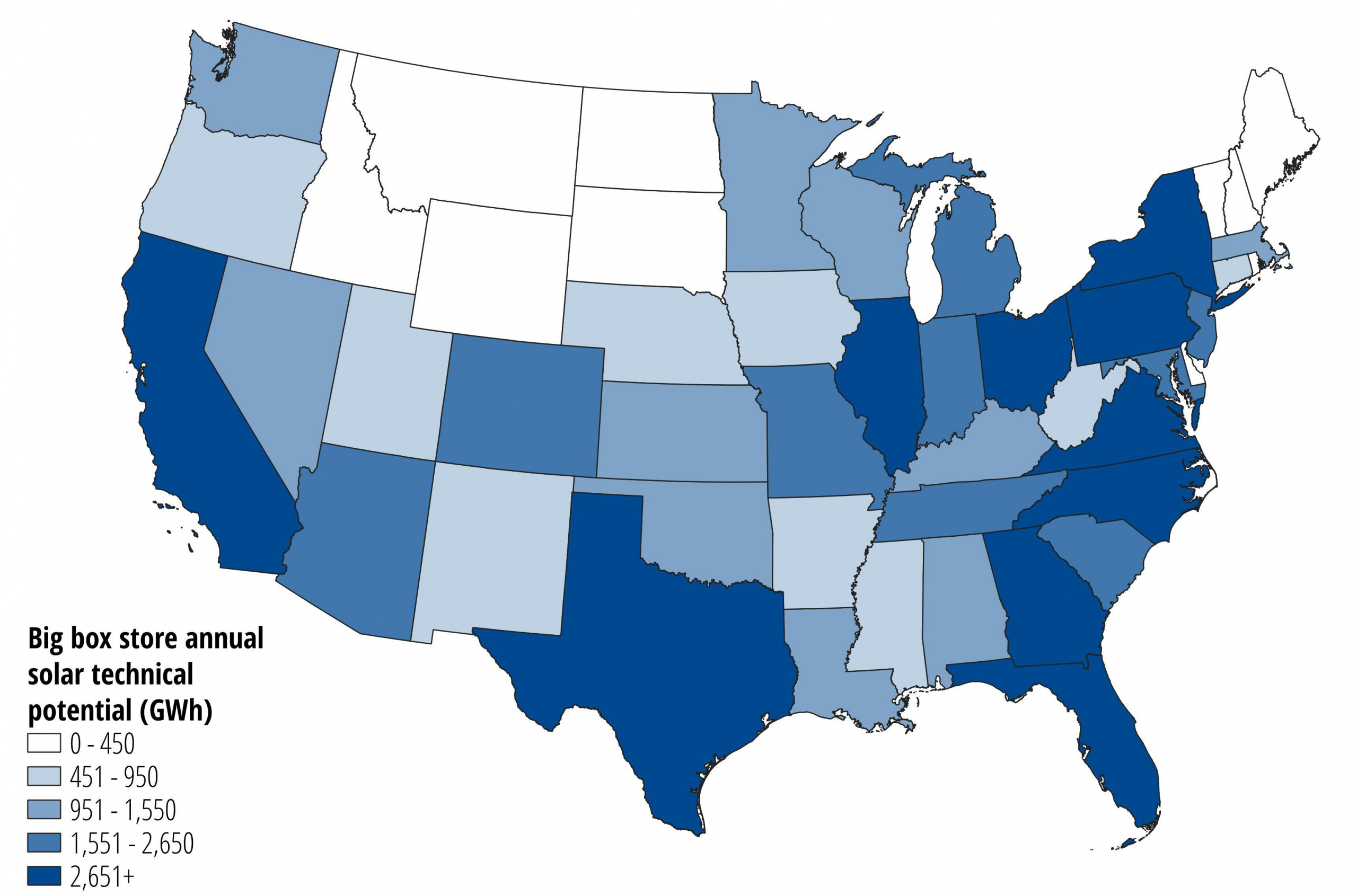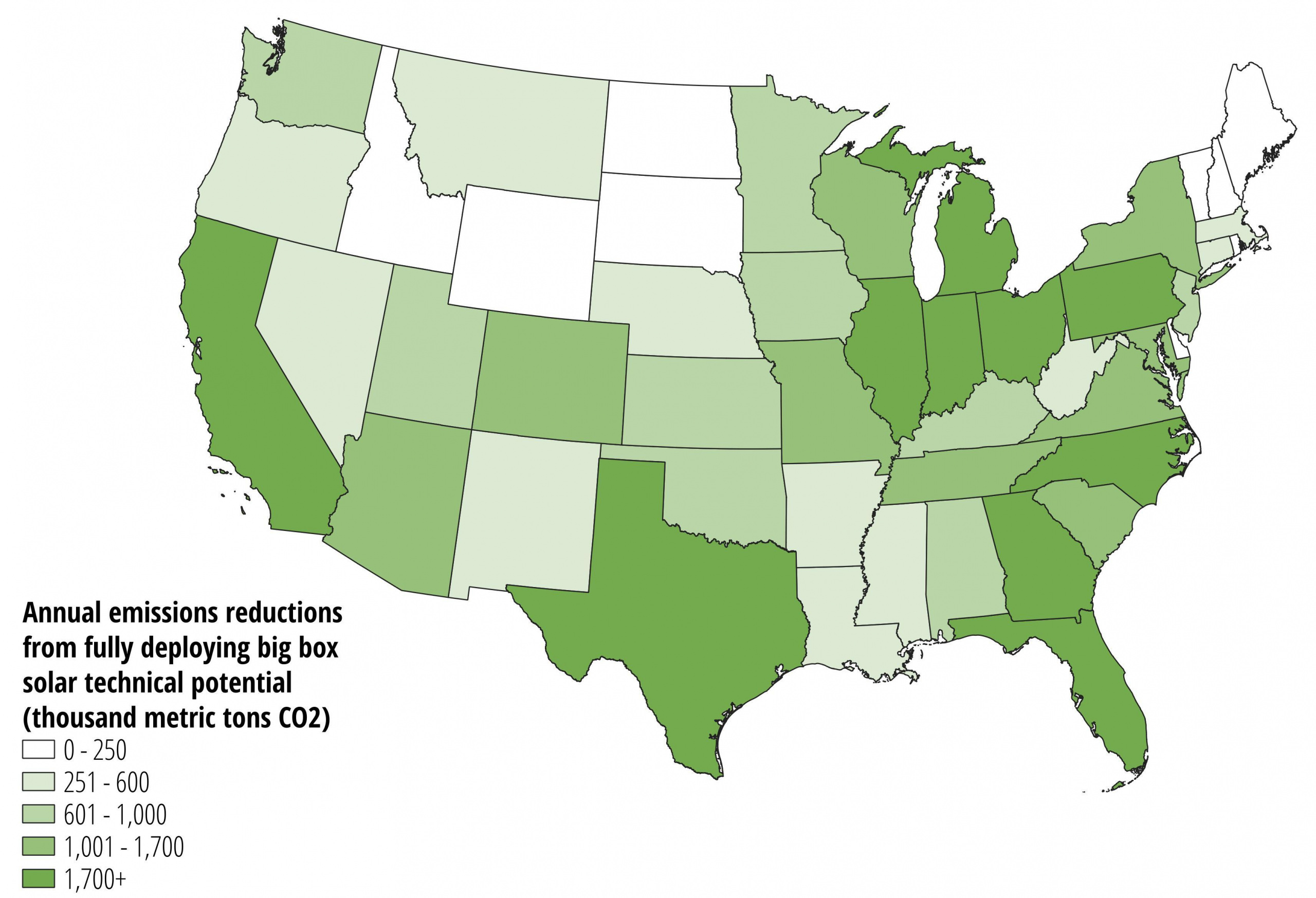
Bryn Huxley-Reicher
Former Policy Analyst, Frontier Group
Superstores might be hard to miss, but they're hiding something on their roofs: huge potential for solar power. Building solar on America's 100,000 big box stores would cut energy use, reduce air pollution, fight global warming and make the electric grid more resilient.
Former Policy Analyst, Frontier Group
Love them or not, superstores in America are here to stay. Those giant buildings are hard to miss, but they’re hiding something on their roofs, something not easily visible to the average shopper: lots and lots of untapped potential to help the environment, and their communities.
I’m talking about solar power. The flat, open, sunny roofs of big grocery stores, retail stores and shopping malls are perfect locations for solar panels. The U.S. has more than 100,000 such buildings, with almost 7.2 billion cumulative square feet of rooftop space. That’s an area the size of El Paso, Texas.
Do the math and it all adds up to an incredible potential clean energy resource. Our recent report, Solar on Superstores, found that the rooftops of America’s big box stores and shopping centers have the potential to generate 84.4 terawatt-hours (TWh) of solar electricity each year, equivalent to the amount of electricity that would power almost 8 million average U.S. homes, or more than 30,400 typical Walmart stores. As the map below shows, even the smallest states have big box solar potential.
Big box store solar PV technical generation potential, by state

Since all those buildings are already connected to the electric grid, it would be a huge and relatively easy win to put them all to work generating clean, renewable electricity.
Solar electricity is already the fastest growing form of electricity generation in the U.S., with capacity increasing about 40-fold between 2010 and 2021. Solar energy is also cheap and getting cheaper.
But the U.S. has only just begun to tap its solar resources: this country has the technical potential to produce 78 times as much electricity as it used in 2020 just with solar photovoltaic (PV) energy, but only 2.2% of all U.S. electricity generation was from solar PV in 2020. That means there are big opportunities to accelerate the transition to a future of 100% clean and renewable energy, including by using the rooftops of “big box” superstores.
Specifically:
As the map below shows, there are opportunities to reduce carbon pollution using big box solar all across the country.
Annual carbon dioxide emissions averted by maximizing technical potential of big box rooftop solar, by state

Many big box retail stores are already reaping the benefits of installing solar power on their rooftops.
That progress is welcome, but there are still many wide, largely empty superstore rooftops that could be generating clean energy to combat climate change, help their communities, increase resilience and reduce their own energy expenses. To tap that enormous potential, businesses should set ambitious goals to install solar generation capacity on their facilities, and officials at all levels of government should implement policies to support that effort.
Many of us might have never seen or even thought about the roof of our local mall or superstore. But with smart policies and strong commitments from big box chains, those vast, flat spaces in the heart of our communities can become an important clean energy resource, with visible benefits for the climate, the environment and our lives.
Photo: Rooftop solar installation and solar parking canopy at IKEA in Baltimore, MD. Credit: IKEA
